ACKNOWLEDGMENTS
The contributors to this volume have been cheerfully cooperative in the face of requests for editorial changes to be made under difficult deadlines and have earned my gratitude. In particular I should like to thank James Knowlson, only coincidentally my predecessor at the editorial helm of the Journal of Beckett Studies , for doing double duty as critic and translator. For released time to complete this volume, I am grateful to the Department of English at the Georgia Institute of Technology, its head, A. D. Van Nostrand, and the dean of the College of Sciences and Liberal Studies, Lester A. Karlovitz. At Grove Press this manuscript has been in the very capable hands of my editor, John Oakes, whom I thank warmly for his enthusiasm and the care he has lavished on this project.
Quotations from Becketts works throughout are to the most recent Grove Press editions except where otherwise noted.
For permission to reprint the essays, I thank the following:
Chris Ackerley, The Unnamables First Voice? Journal of Beckett Studies n.s. 2.2 (Spring 1993): 5358.
Walter D. Asmus, Beckett Directs Godot , Theatre Quarterly , 5 (19, 20, September, November 1975): 1926.
Walter D. Asmus, Rehearsal Notes for the German Premiere of Beck etts That Time and Footfalls at the Schiller-Theater Werkstatt, Berlin, Journal of Beckett Studies , no. 2 (Summer 1977): 8295.
Pierre Astier, Becketts Ohio Impromptu: A view from the Isle of Swans, Modern Drama , 25 (September 1982): 33141.
Georges Bataille, Molloys Silence, Critique , 7 (May 1951): 38796.
Maurice Blanchot, Where Now? Who Now? Evergreen Review , 2 (7, Winter 1959): 22229.
Herbert Blau, Notes from the Underground: Waiting for Godot and Endgame , The Impossible Theater: A Manifesto (New York: The Macmillan Co., 1964).
Dialogue: Roger Blin and Tom Bishop, Cahiers de LHerne: Samuel Beckett (Paris: Editions de lHerne, 1976), 14146.
Victor Bockris, ed., Burroughs with Beckett in Berlin, With William Burroughs: A Report from the Bunker (New York: Seaver Books, 1981), 20914. Reprinted with permission of Seaver Books.
Enoch Brater, Light, Sound, Movement, and Action in Becketts Rockaby , Modern Drama , 25 (September 1982): 34248.
Ruby Cohn, Beckett Directs: Endgame and Krapps Last Tape , Just Play: Becketts Theater (Princeton: Princeton University Press, 1980), 24970.
J. E. Dearlove, The Voice and Its Words: How It Is , Accommodating the Chaos: Samuel Becketts Nonrelational Art (Durham, N.C.: Duke University Press, 1982), 85106. Copyright Duke University Press.
Martin Esslin, Samuel Beckett and the Art of Radio, Mediations: Essays on Brecht, Beckett, and the Media (New York: Grove Press, Inc., 1982), 12554.
S. E. Gontarski, Literary Allusions in Happy Days , Becketts Happy Days: A Manuscript Study (Columbus: The Ohio State University Li brary Publications, 1977), 5973.
S. E. Gontarski, Quad and Catastrophe , The Intent of Undoing in Samuel Becketts Dramatic Texts (Bloomington: Indiana University Press, 1985), 17982.
Lawrence E. Harvey, Watt , Samuel Beckett: Poet and Critic (Princeton: Princeton University Press, 1970), 34884. Reprinted by permis sion of Princeton University Press.
Wolfgang Iser, When Is the End Not the End? The Idea of Fiction in Beckett, The Implied Reader: Patterns of Communication in Prose Fiction from Bunyan to Beckett (Baltimore: Johns Hopkins University Press, 1974), 25773.
James Knowlson, Footfalls , Frescoes of the Skull: The Later Prose and Drama of Samuel Beckett (New York: Grove Press, Inc., 1980), 22028.
Paul Lawley, Counterpoint, Absence, and the Medium in Becketts Not I , Modern Drama , 26 (4, December 1983): 40713.
Eric P. Levy, Mercier and Camier : Narration, Dante, and the Couple, Beckett and the Voice of Species: A Study of the Prose Fiction (Totowa, N.J.: Barnes & Noble Books, 1980), 3953.
MacGowran on Beckett, Interview by Richard Toscan, Theatre Quar terly, 3 (11, JulySeptember 1973): 1522.
Dougald McMillan, Samuel Beckett and the Visual Arts: The Em barrassment of Allegory, Samuel Beckett: A Collection of Criticism , Ruby Cohn, ed. (New York: McGraw-Hill Book Co., 1975), 12135.
Dougald McMillan, Worstward Ho , Irish Literary Supplement , 3 (2, Fall 1984): 39.
Marjorie Perloff, Between Verse and Prose: Beckett and the New Poetry, Critical Inquiry , 9 (2, December 1982): 41534.
Rubin Rabinovitz, Murphy and the Uses of Repetition, The Devel opment of Samuel Becketts Fiction (Urbana: University of Illinois Press, 1984), 71103.
Alan Schneider, Working with Beckett, Samuel Beckett: The Art of Rhetoric , Edouard Morot-Sir, Howard Harper, and Dougald Mc Millan, eds. (Chapel Hill: North Carolina Studies in the Romance Languages and Literatures, 1976), 27189. Reprinted with permission of the publisher.
Richard W. Seaver, Beckett and Merlin , Samuel Beckett: I Cant Go On , Ill Go On (New York: Grove Press, Inc., 1976), xxviii, xxiiixxv.
* * *
Harcourt Brace Jovanovich, Inc., The Hollow Men by T. S. Eliot. From Collected Poems 19091962 by T. S. Eliot, copyright 1936 by Harcourt Brace Jovanovich, Inc.; copyright 1963, 1964 by T. S. Eliot. Reprinted by permission of the publisher.
PRELIMINARIES
BECKETT AND MERLIN
Richard W. Seaver
The early fifties found me in Paris, fresh out of college, in search of Im not sure what gods or ghosts but convinced they could be discovered only in that magic city. I had found quarters, if that term can be applied to an abandoned warehouse, on the rue du Sabot, a tiny street directly behind St.-Germain-des-Prs. The owner was a Swiss dealer in primitive art. In return for my tending the shop a few hours a week, he gave me free lodging in an empty ground-floor warehouse at the end of the courtyard. I mention the geography because this dpt which, my Swiss landlord proudly informed me, had once been a banana-drying shed was destined to become the headquarters of the magazine- and book-publishing enterprise known to history as Merlin and also because it was a scant fifty yards from the offices of the most daring and perceptive French publisher of the time, Les Editions de Minuit.
There were two routes from my warehouse-home to the bright cafs of St.-Germain-des-Prs, one by the rue du Dragon, the other by the rue Bernard-Palissy, and since I took at least two trips to St.-Germain every day and always tried to avoid taking the same route twice in a row, it happened, almost inevitably, that I passed number 7 of the latter street at least once a day. Number 7, a bordel until the puritanical wrath of a famous female Gallic zealot of the period, Marthe Robert, caused these dens of iniquity to close in 1948, now housed Les Editions de Minuit. The grilled peephole was still on the thick wooden door. To the right of the door was a tiny display window set into the wall, which in times past had housed God knows what bawdy come-ons. Now, in the winter of 195152, it housed two works, whose blue titles stared out at me each day as I passed: Molloy and Malone meurt. Closer scrutiny revealed the name of the author: Samuel Beckett. I passed that window several times before I made the connection. I was then very deeply into Joyce and remembered that it was Beckett who, twenty-odd years before, had contributed the opening essay to that collection of twelve odes to the Master, Our Exagmination Round His Factification for Incamination of Work in Progress. It was Beckett, too, I recalled, who had, with French writer Alfred Pron, translated the Anna Livia Plurabelle episode of Finnegans Wake into French. What was this Irishman, whom I had also heard referred to as Joyces secretary, doing writing in French? Or were the Minuit books translations from novels Beckett had written in English? If so, I had never heard of them.

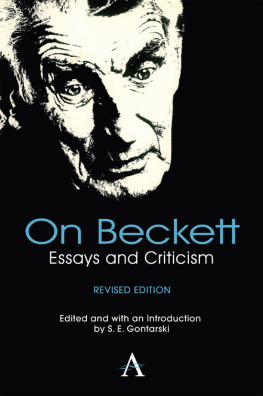
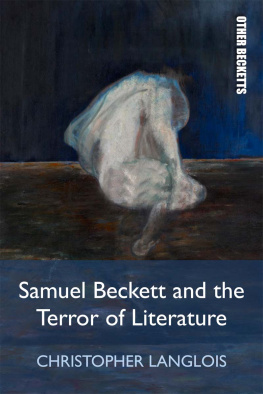

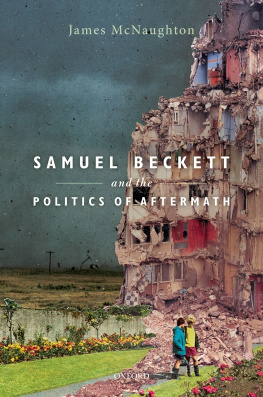
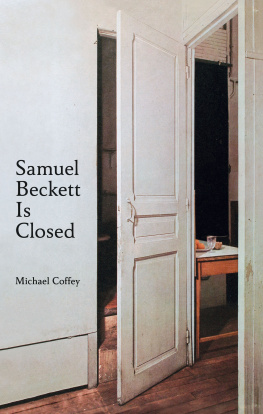
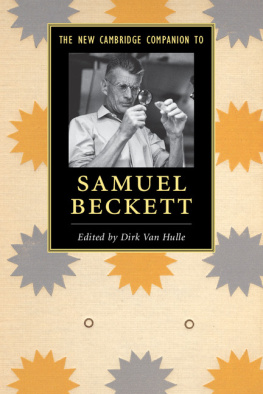
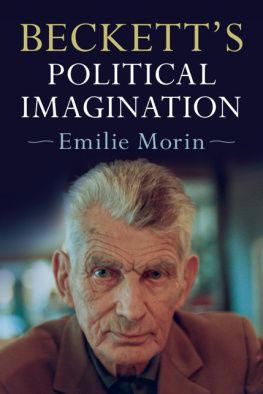
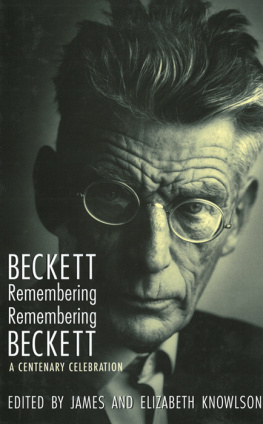

![Samuel Beckett [Samuel Beckett] - The Complete Dramatic Works](/uploads/posts/book/72751/thumbs/samuel-beckett-samuel-beckett-the-complete.jpg)